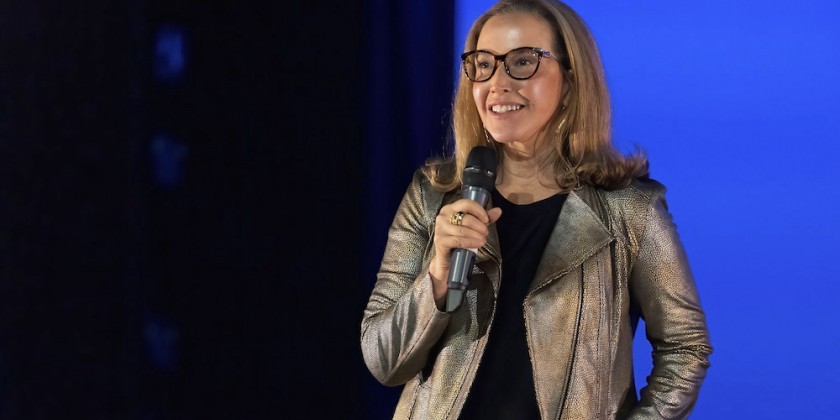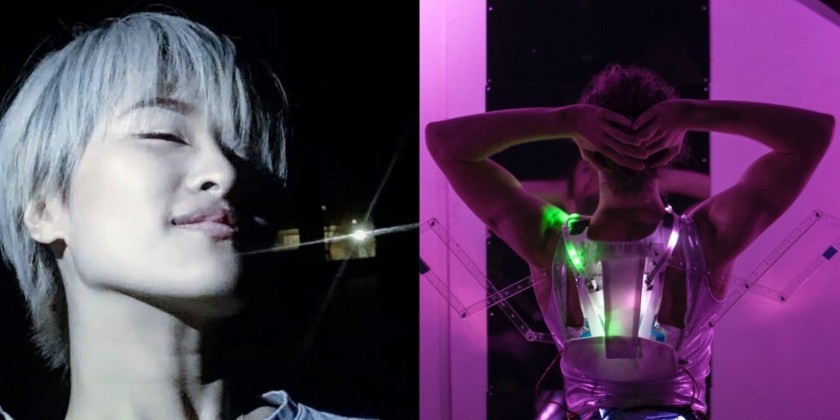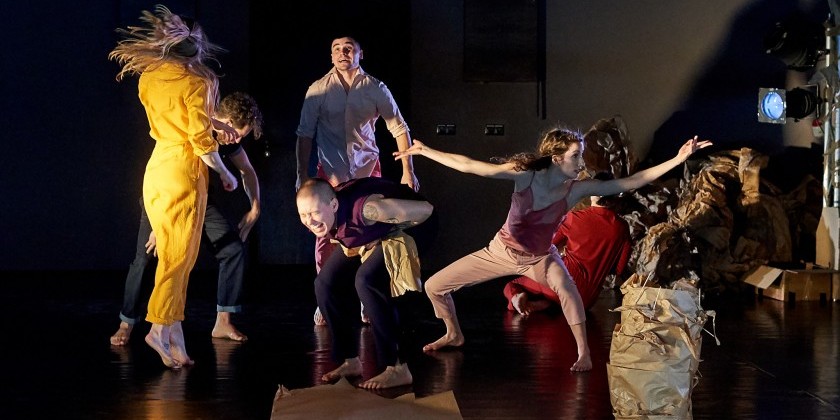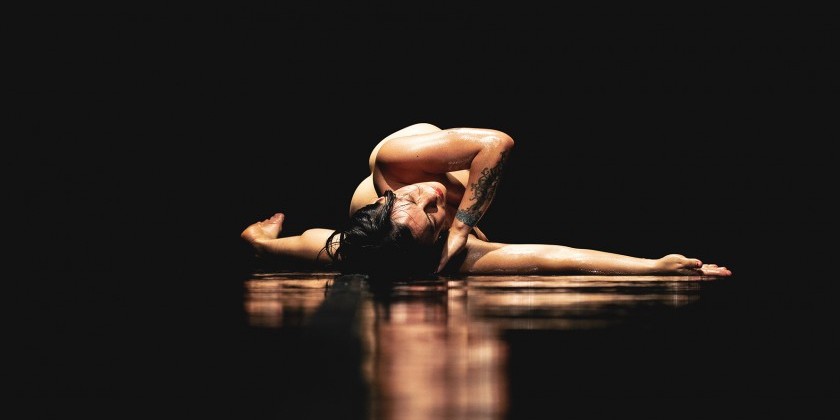IMPRESSIONS: Dean Moss' "Petra" at Performance Space New York as Part of COIL Festival
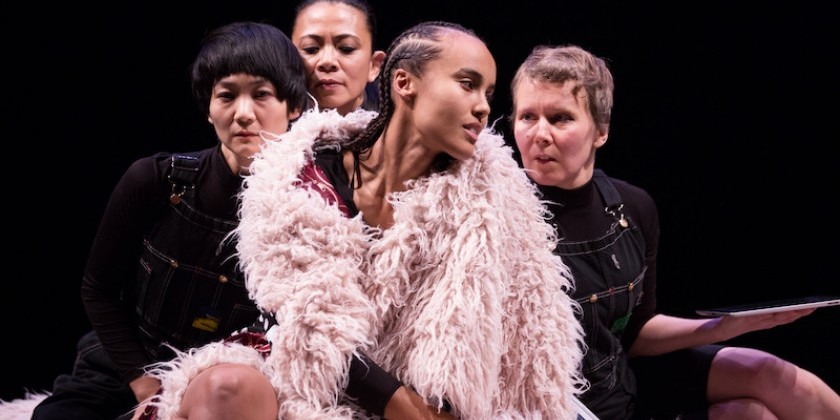
Concept, Direction, Choreography, Audio/Visual Design, Text: Dean Moss
Performing Collaborators: Mina Nishimura, Sari Nordman, Kaneza Schaal, Samita Sinha and Paz Tanjuaquio
Vocal Score and Composer: Samita Sinha
Text based on Rainer Warner Fassbinder's film, The Bitter Tears of Petra von Kant
Pictured above: Mina Nishimura, Paz Tanjuaquio, Kaneza Schaal, and Sari Nordman in Dean Moss' Petra
Dean Moss' world premiere of Petra is a stage recreation, of sorts, of Rainer Warner Fassbinder's 1972 film The Bitter Tears of Petra von Kant. Though I thought I had done my due diligence before the performance, it escaped me that this work refers to the film. I went in knowing only that the piece is described as masochistic and autobiographical, with a focus on race, sex, and power.

I say this because I may have misunderstood elements of the performance. But I don't think that's the case. Petra offers stilted acting, awkward transitions, and lacks tension. Though billed as dance, it can hardly be considered as such. It's choreographed and performed in the same way that our daily public movements are: Tasks are accomplished, and we hold ourselves differently depending on who sees us. Paz Tanjuaquio performs a few moments of post-modern movement toward the end, but they occur in a nonsensical void with little relation to what came before.

Kaneza Schaal and Samita Sinha in Dean Moss' Petra; Photo: Julieta Cervantes
Like the film, Petra largely takes place in the title character's bedroom. A low-set riser functions as a bed or, when it's turned on its side, a wall. Petra, a wealthy artist played by Kaneza Schaal, moves with an almost listless quality, tossing her head in mocking laughter and plunking gracelessly down on her bed. Monologues reveal Petra's calculating and cruel personality, and Schaal doubles down with lots of sidelong glances. The rest of her physicality, though, is at odds with Petra's spoken lines. Her Petra possesses a kind of wealth-induced lassitude, expectant as she is at having every whim met. But she doesn't demonstrate the energy and poise necessary to convince the audience she ever fought her way to the top of anything — let alone the cutthroat art world. And she certainly doesn't seem passionate enough for obsession.

When Petra meets a young woman, played by Samita Sinha, she is hopelessly smitten. Sinha (also the work's composer) struggles to actualize her character. Her voice is flat and sometimes inaudible. It's unclear where she's looking at any given moment. In a seduction scene at a party, she and Schaal circle and pass each other. They take such tentative steps, though, that they look like teenagers at a school dance, rather than two beautiful women sizing each other up. Schaal and Sinha are an accomplished actor and sound artist, respectively, but their movement feels like an especially unfortunate afterthought.
The other three performers (Mina Nishimura, Sari Nordman, and Tanjuaquio) are well-known dancers who use their training to palpably ground themselves and direct energy from their centers. This trio constitutes a kind of chorus in the shared role of Petra's silent maid Marlene. Much of their choreography involves moving set pieces when they're not answering Petra's every beck and call. And when they do answer, they hold back in the neck and shoulders just enough to show they're guarded, with a shade of defiance. As Marlene, the three either work together or pass tasks seamlessly from one to the next, hinting at complexities underneath their silence that Petra will never bother to notice. The three also give original narratives and play relatives of Petra. Nordman, as her daughter, has the most distinct body language, bouncing into her mother's room with unconstrained enthusiasm.

When Nishimura, Nordman, and Tanjuaquio offer their personal narratives, it's the work's clearest autobiographical facet. Nishimura talks about her happy marriage. Tanjuaquio ruminates on whether sharing would just give Moss something to shape and use. Stepping out of their roles, they pull back the curtain on their “real” thoughts. Sometimes, characters still within the world of the play speak over the person delivering her narrative. That curtain, separating artifice from reality, is tugged back and forth as the viewer tries to listen to both voices at once. It's hard to know, then, how much each narrative has been edited or abbreviated, whether this moment is actually honest.
Regardless, the sharpest statement the play makes is that it's hard, in art or life, to avoid transactional relationships and harder still to sustain ones that feel mutually supportive. The intellectual and conceptual framework of Petra brims with important questions, but its artistic delivery falls far short.










